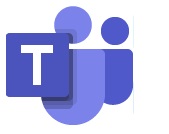Microsoft is crushing it with Office 365, and in turn, most enterprise knowledge workers are sitting in front of Office Apps and services all day long. Therefore, the importance of Digital Experience Monitoring solutions for monitoring Office 365 keeps growing too.
Start with Office 365 Digital Experience Monitoring Crucial to Enterprise Productivity - Part 1
Digital Experience Monitoring for SharePoint Online and OneDrive
 People love to bash SharePoint and while it can sometimes become unwieldy, it remains incredibly popular and flexible. The latest version of SharePoint Online (SPO) dubbed "Modern" does more client-side interaction which makes it easier and more pleasant to work with. If you have users and teams are dependent on SPO / OneDrive, then you should be monitoring the SharePoint Online Digital Experience:
People love to bash SharePoint and while it can sometimes become unwieldy, it remains incredibly popular and flexible. The latest version of SharePoint Online (SPO) dubbed "Modern" does more client-side interaction which makes it easier and more pleasant to work with. If you have users and teams are dependent on SPO / OneDrive, then you should be monitoring the SharePoint Online Digital Experience:
■ SharePoint Site availability and uptime for Service Level Agreement management
■ Permissions, Login and Sign-In performance
■ SharePoint interaction with Single Sign-On vendors and tools such as Azure AD, ADFS, Okta
■ SharePoint Drive and asset availability, creation and access
■ Hop-by-hop network path performance for SharePoint and OneDrive from end-user locations, branch offices and varying network conditions that users experience. For a proper DEM solution, you must monitor from real user locations.
■ Search performance. SharePoint sites for busy teams often require lots of search horsepower so everyone can find what their looking for (obviously)
■ Upload and Download file performance, SharePoint bandwidth and ability to synchronize files.
■ SPO Health scores, Internet Information Services (IIS) Latency, and SharePoint Request Duration. These are critical values for monitoring the health of your SharePoint tenant.
Bench-marking SharePoint metrics is critical for comparison purposes. By bench-marking your SharePoint site performance, you can identify poorly performing SharePoint tenants and contact your Microsoft representative if site health is poor compared to the crowd. Crowd-sourced metrics are critical when it comes to measuring the performance of cloud services.
Digital Experience for Microsoft Teams
 Finally, we'll finish up with the requirements for Microsoft Teams Digital Experience Monitoring. Teams is a large and growing platform for Office 365. Its quickly becoming the new foundation for how businesses collaborate. With the forced replacement of Skype for Business Online next summer (June 2021), MS Teams will become even more business critical and requires monitoring.
Finally, we'll finish up with the requirements for Microsoft Teams Digital Experience Monitoring. Teams is a large and growing platform for Office 365. Its quickly becoming the new foundation for how businesses collaborate. With the forced replacement of Skype for Business Online next summer (June 2021), MS Teams will become even more business critical and requires monitoring.
Monitoring the digital experience of Microsoft Teams should at least cover the following:
■ Teams Site availability and uptime for Service Level Agreement (SLA) management
■ Permissions, Login and Sign-In performance
■ Presence and availability, latency
■ Teams creation, access, messaging and notification performance
■ Microsoft Teams Audio Video Application Performance
- End-to-end network performance assurance and tests
- Audio, Video Jitter
- Video and Audio Frame, Bitrates
- Packet Loss
- Round Trip Delay Time (RTT) and latency as seen by the WebRTC layer that MS Teams utilizes
- STUN, TURN and other WebRTC protocol performance
- Monitoring VoIP/Video performance requires monitoring from real-user networks and locations. Monitoring VoIP availability from the cloud is useless for determining digital experience.
■ Proxy Connect Times if leveraging local or cloud-based proxy systems (like Zscaler)
■ TCPIP Connect
■ DNS Lookup performance
■ SSL Negotiate (good indicator of general network congestion)
■ Page Layout, Render and DOM Loaded times
■ Time to First Byte (TTFB) across all the MS Teams connections
Capturing and comparing this performance data across your environment enables different IT teams monitor the digital experience of MS Teams proactively.
Easy to Install, Integrate, Coverage for Other Clouds
With the basic requirements for a full featured Office 365 Digital Experience Monitoring solution out of the way, a proper solution should be easy to install and easy to integrate with. What good is a DEM solution that collects data and operates in a vacuum?
Integration, regardless of whether the system is cloud-based or not, usually entails existing on-premise or cloud-based monitoring and ITSM solutions like Enterprise Splunk, SCOM, or ServiceNow are very popular requirements for DEM solutions.
And along with monitoring the core Office apps, a user experience monitoring solution should absolutely have support for additional dependent services like:
■ Yammer and Skype for Business. There still here and beloved by some.
■ Azure AD, ADFS and a whole compliment of critical authorization services. Ideally, covering these services should watch their interactions with the downstream services to ensure performance.
■ VoIP, DNS, and other latency tests
■ Dynamics, Salesforce and other CRM solutions
■ Generic Web Login and Web Monitoring solution for any application
Microsoft Office 365 Is How Business Collaborates
Measuring end-user experiences across the Office applications and services has become critical as Microsoft Office 365 is more widely adopted and users are working from home more. Ensuring optimal user productivity and satisfaction is a core tenant of Digital Experience Monitoring solutions and that means desktop engineers, IT architects and network administrators should monitor ALL of Office 365.

